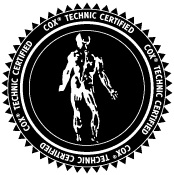Help for Richmond Back Pain's Fatty Paraspinal Muscles
If you experience chronic back pain, like many other Richmond back pain patients, odds are you have heard of paraspinal muscle fatty infiltrate. This spinal issue can cause a great deal of discomfort and can even result in gait disturbances. In this blog post, we'll take a closer look at paraspinal muscle fatty infiltrate and how it is associated with lumbar spinal stenosis and its treatment with spinal manipulation available at Johnson Chiropractic.
WHAT IS PARASPINAL MUSCLE FATTY INFILTRATE?
Paraspinal muscle fatty infiltrate is a build-up of fat within the muscle tissues located near the spine. Genetics or aging are often culprits of this condition, but it can also be activated by lifestyle factors like eating poorly or not exercising. It is important to note that paraspinal fatty muscle infiltrate does not always produce symptoms, but if it does, they can involve low back pain, stiffness in the lower back and legs, or difficulty walking due to gait disturbances as gait relies on hip muscles like the gluteus medius. A new report described how the extent to which the gluteus medius is atrophied (degenerated) impacted lumbar spinal stenosis symptomatology. (1) A leading spinal condition impacting more than 500 million people over 65 years old, lumbar spinal stenosis, is linked to distorted gait as gait depends on strong muscle activity. (2) Richmond chiropractic patients know Johnson Chiropractic evaluates gait in all our patients during our chiropractic exam.
PARASPINAL FATTY INFILTRATE AND LUMBAR SPINAL STENOSIS
Paraspinal muscle fatty infiltrate can be associated with lumbar spinal stenosis—a narrowing of the spinal canal that results in lower back pain and even pain down the legs by exerting pressure on spinal nerves – and resulting Richmond back pain. Intervertebral disc degeneration and fatty-infiltrated paraspinal muscles – multifidus, erector spinae, etc. – are related and found to contribute to chronic low back pain and related issues: the fattier, the more degenerated. (3) Other researchers agreed that fat infiltration of the paraspinal muscles like the multifidus muscle may be linked to lower back pain when it was not associated with other factors like a person with back pain being older, male, or having a higher BMI. (4) Johnson Chiropractic offers alleviating chiropractic treatment for lumbar spinal stenosis and its back pain.
LUMBAR SPINAL STENOSIS & SPINAL MANIPULATION
There are various treatment options for spinal stenosis influenced by the severity and the healthcare practitioner consulted from nutrition, surgery, exercise, drugs, and/or spinal manipulation and mobilization. One study reported that one session of spinal manipulation was documented to significantly reduce spinal stiffness and increased the multifidus muscle thickness ratio which maintained for more than 7 days for spinal manipulation responders. (5) Your Richmond chiropractor uses such care for back pain relief, particularly the well-researched chiropractic Cox® Technic System of Spinal Pain Management. Listen to this PODCAST with Dr. James Cox on The Back Doctors Podcast with Dr. Michael Johnson as he details how The Cox® Technic System of Spinal Pain Management addresses back pain and affiliated muscles.
CONTACT Johnson Chiropractic
Paraspinal muscle fatty infiltrate is a common condition that can cause a range of issues involving low back pain, stiffness in the lower body, and gait disturbances. It is sometimes associated with lumbar spinal stenosis. If you have any symptoms related to paraspinal muscle fatty infiltrate or lumbar spinal stenosis, it's time to visit with your Richmond chiropractor at Johnson Chiropractic about your treatment options so you can find relief as fast as possible. Schedule your appointment today!


